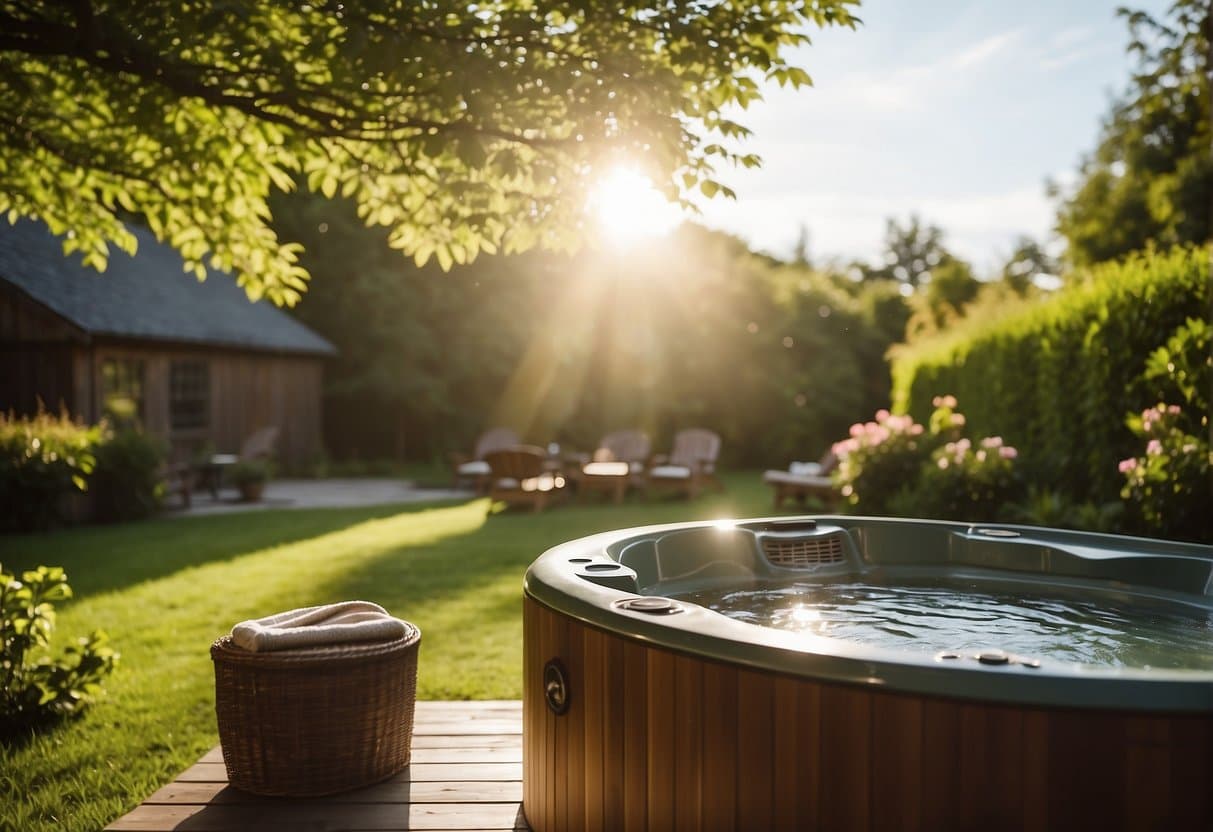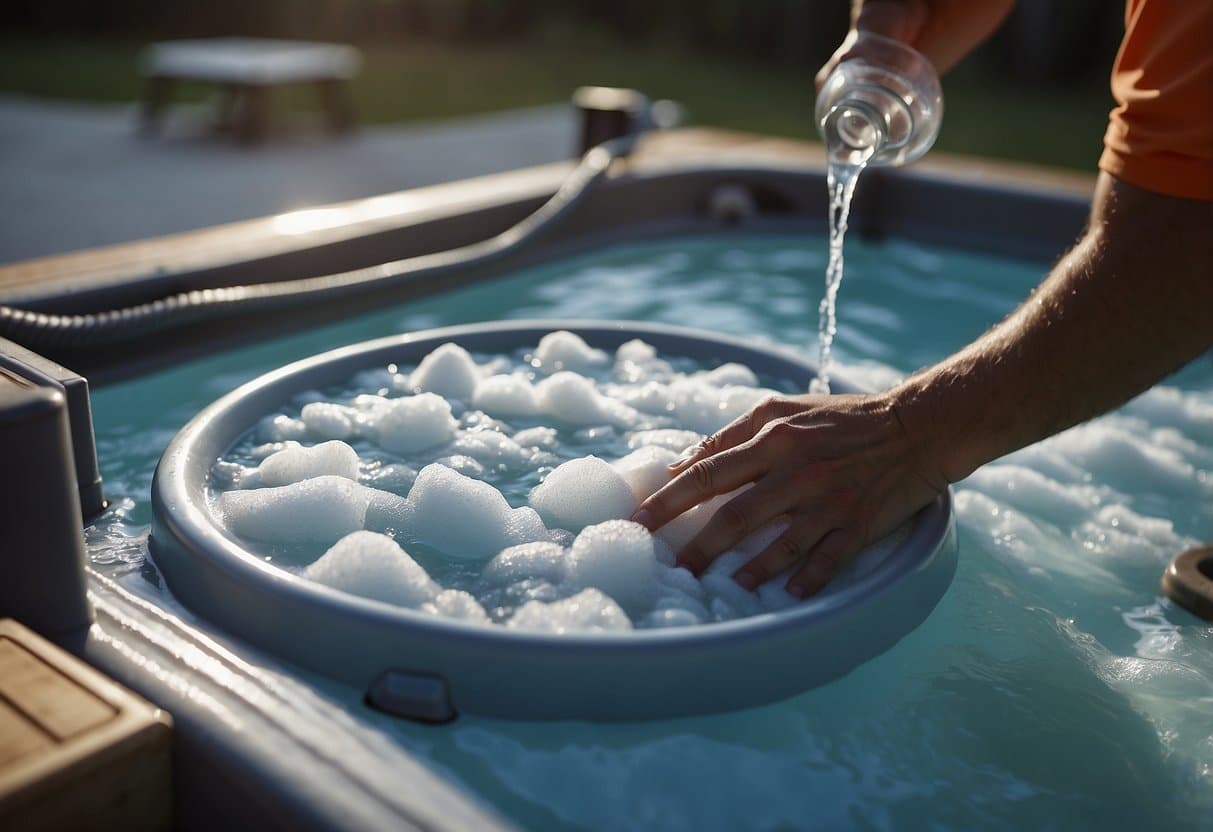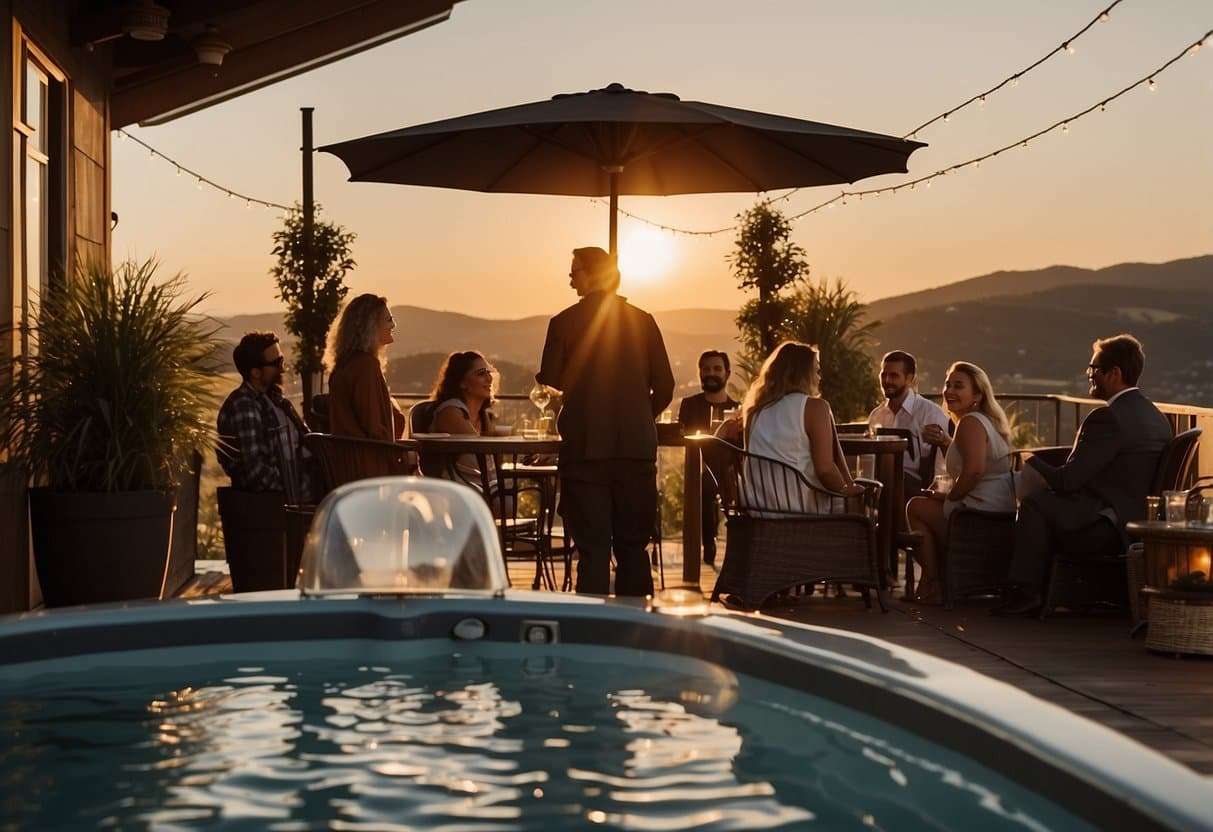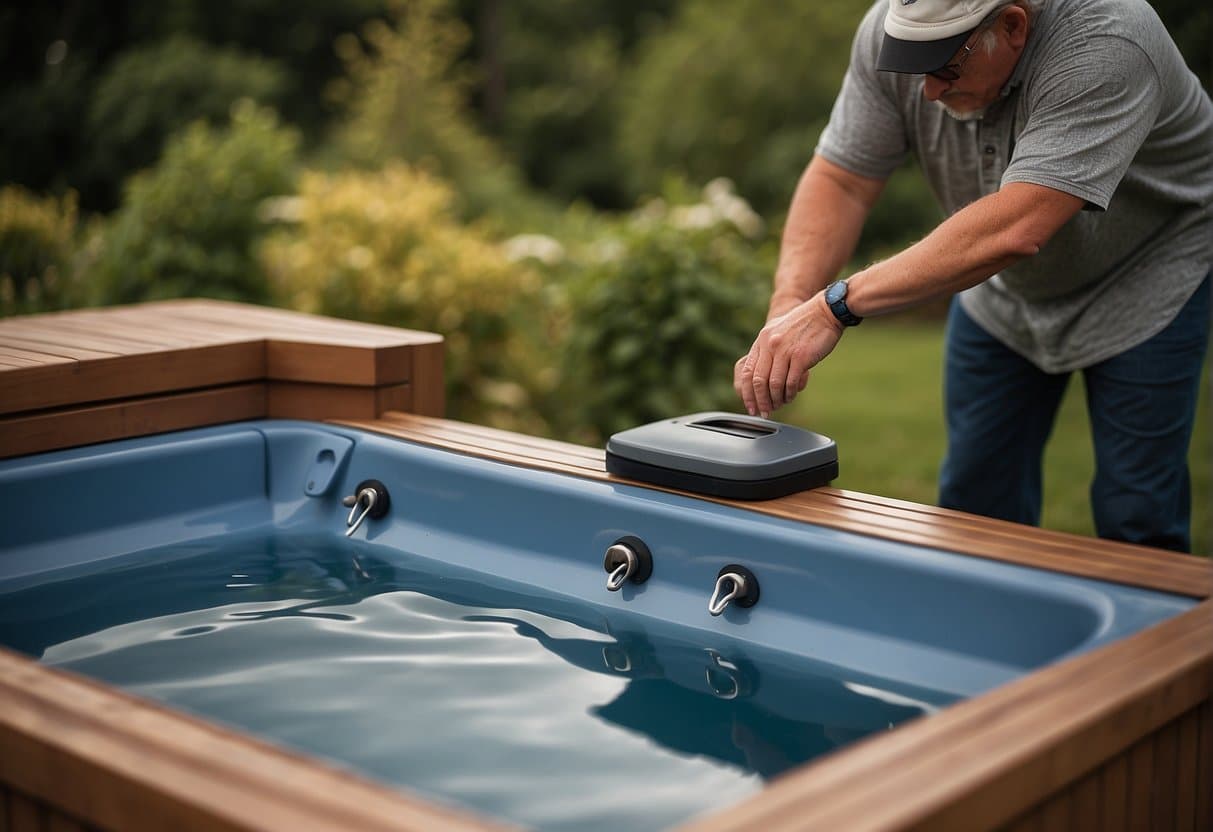Several factors determine the minimum temperature for a hot tub in summer, such as user preference, health, and safety concerns. The standard recommended range for hot tubs is typically between 100-102°F (37-39°C) although the maximum limit often stands at 104°F (40 °C). However, during summer, maintaining a temperature at the lower end of this range guarantees a comfortable and refreshing experience.
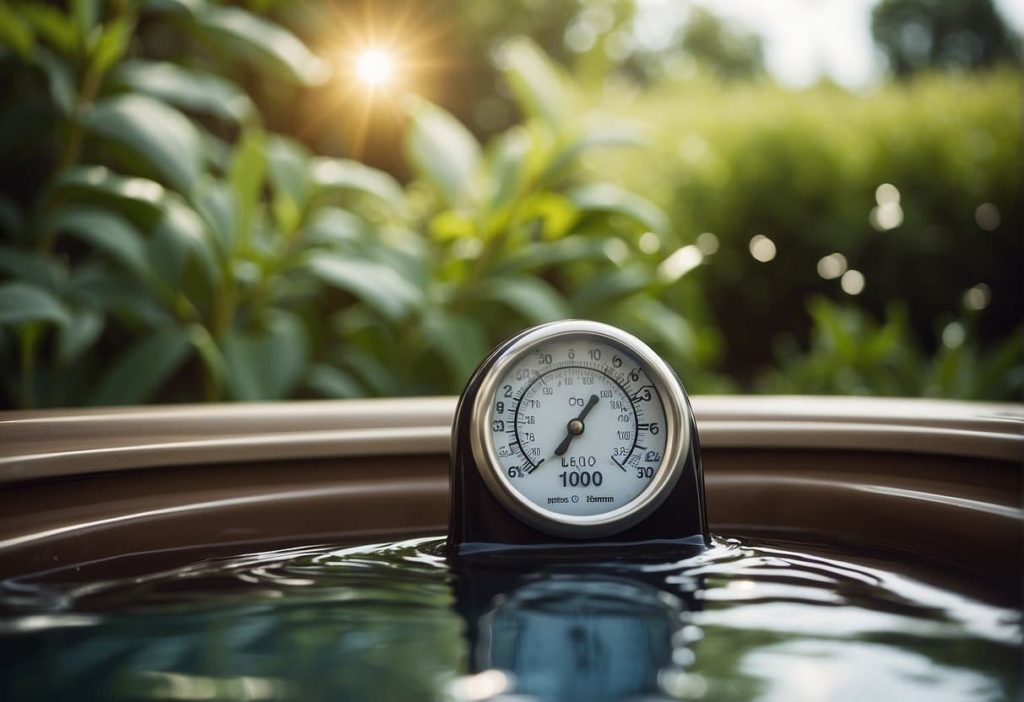
During the warm summer months, hot tub owners need to maintain an optimal temperature for the comfort and safety of their guests. An appropriate minimum temperature not only enhances the relaxation experience but also ensures energy efficiency, thus saving costs. This article will discuss the ideal minimum temperature range for hot tubs in summer and the factors that contribute to finding the perfect balance.
Additionally, it’s vital to consider the health and age of individuals using the hot tub, as the recommended temperatures can vary depending on the specific user profile. Pregnant women, young children, and individuals suffering from certain medical conditions should opt for lower-temperature settings. As a hot tub owner, keeping these factors in mind will help you create a desirable environment for all your guests throughout the summer months.
Understanding Hot Tub Temperatures
Fundamentals of Water Temperature
When it comes to hot tubs, selecting the appropriate water temperature is crucial for ensuring a comfortable and enjoyable experience. The minimum temperature for hot tubs during summer months is typically around 85°F (29°C), while the maximum temperature is recommended not to exceed 104°F (40°C). This range provides a comfortable and safe experience for most users.
A more comfortable temperature often falls within the range of 98°F (37°C) to 102°F (39°C). This range is ideal for the majority of hot tub users and promotes relaxation. However, it is important to note that individual preferences may vary, and users should select a temperature that suits their personal comfort level.
The Role of Climate in Hot Tub Temperature Selection
Climate plays a significant role in determining the appropriate hot tub water temperature. For example, during summer months, direct sunlight and warmer weather can cause the water to heat up quickly. On the other hand, shade from trees or overhangs can keep the water cooler for longer periods. Therefore, hot tub users need to consider the surrounding environment when choosing their ideal hot tub temperature.
Here is a brief overview of factors to consider when selecting hot tub temperature during summer:
- Air temperature: Higher air temperature during summer can cause the water to heat up more quickly, and thus, a lower water temperature may be more desirable.
- Sunlight exposure: Direct sunlight can significantly warm up the water temperature, so it is essential to account for the hours of sunlight exposure when determining the ideal water temperature.
- Shade: Covering your hot tub with shade or installing it under a tree can help maintain a cooler and more comfortable water temperature during the hot summer months.
By understanding the fundamentals of water temperature and considering the role of climate, hot tub users can select the most appropriate temperature for their hot tub during summer. This will ensure a safe, comfortable, and enjoyable experience for all users.
Health and Safety Considerations
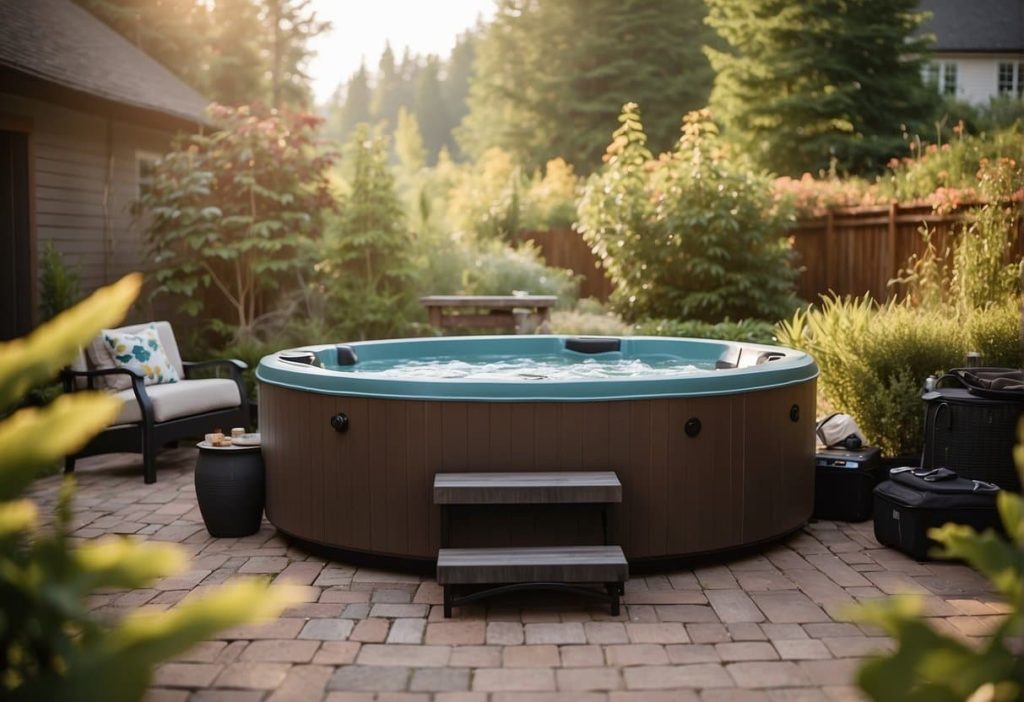
Safe Temperature Ranges for Different Users
When it comes to hot tub temperature settings, different user groups have specific recommended ranges for safety and health reasons. The following table outlines the safe temperature ranges for various users:
| User Group | Safe Temperature Range (°F) |
| Children | 95-104 |
| Healthy Adults | 100-104 |
| Pregnant Women | 97-100 |
| Elderly | 95-100 |
Children should not be exposed to temperatures above 104°F due to their increased risk of heat stroke and dehydration. Supervision is recommended to ensure they stay within the safe temperature range.
For healthy adults, a temperature range of 100-104°F is considered safe. However, it’s best to limit hot tub usage to 15-20 minutes per session to avoid health risks associated with prolonged exposure to elevated temperatures.
Pregnant women should consult with their healthcare provider before using a hot tub, as temperatures above 100°F can cause increased blood pressure and other health issues during pregnancy. A safe temperature range is 97-100°F, and close monitoring is advised.
The elderly have a higher risk of experiencing blood pressure fluctuations and heat-related illnesses. It is recommended that they maintain a temperature range of 95-100°F and closely monitor their time in the hot tub.
Preventing Health Risks with Proper Temperature Management
Proper temperature management is crucial for ensuring health and safety, as it not only helps prevent heat stroke and blood pressure issues but also aids in controlling bacteria growth. The Consumer Product Safety Commission recommends keeping hot tub water temperature no higher than 104°F.
Regularly monitoring and adjusting the pH levels of the hot tub water is essential for preventing bacterial growth, which can pose health risks. The ideal pH level should be between 7.2 and 7.8 to maintain a safe and bacteria-free environment.
Implementing proper hygiene practices, such as showering before entering the hot tub and regularly cleaning the tub and filters, can further assist in reducing bacteria levels and maintaining an optimal environment for users.
In summary, adhering to the temperature guidelines for different user groups and proper temperature management practices will ensure a safe and enjoyable hot tub experience while minimizing potential health risks.
Hot Tub Maintenance in Summer
Optimizing Hot Tub Chemical Balance
During the summer, it is essential to maintain a well-balanced hot tub to ensure clean and safe water. Factors such as frequent use, increased oils, and higher temperatures can alter the chemical balance, necessitating adjustments.
- Chlorine levels: Regularly check chlorine levels to eliminate bacteria and algae. In summer, aim for a range of 3 to 5 ppm.
- pH levels: Test and adjust pH levels between 7.4 and 7.6 to prevent skin irritation and corrosion of the hot tub components.
- Filter maintenance: Clean the filter every 2 to 4 weeks, depending on usage, and replace it annually. A clean filter is essential for efficient filtration and circulation.
It is also essential to maintain the hot tub’s cleanliness by regularly removing debris. Draining the hot tub every 3 to 4 months or as needed is also recommended, as this allows for a thorough cleaning of the tub’s interior.
Temperature Effects on Hot Tub Components
Higher temperatures during the summer can affect various hot tub components and influence energy consumption. Keep the following factors in mind to maintain optimal performance during warmer months:
- Hot tub cover: Exposure to sunlight and heat can cause wear and tear to the hot tub cover. Regularly cleaning and using a UV-protectant spray can help increase the cover’s lifespan.
- Heater: In the summer, you may need to lower the hot tub’s temperature setting to keep water at a comfortable level. Lower temperatures can also reduce energy consumption and the demand for the heater.
- Jets: Ensure that the jets’ nozzles are clean and free of blockages. Blocked jets can cause strain on the hot tub’s circulation system, reducing efficiency and potentially damaging components.
Additional steps, such as placement of the hot tub in a shaded area or using the hose to add cool water, can help reduce the temperature and minimize the effects of summer heat on your hot tub. Regular inspections and maintenance are key to ensuring your hot tub remains in optimal condition all summer long.
Temperature Control Technologies
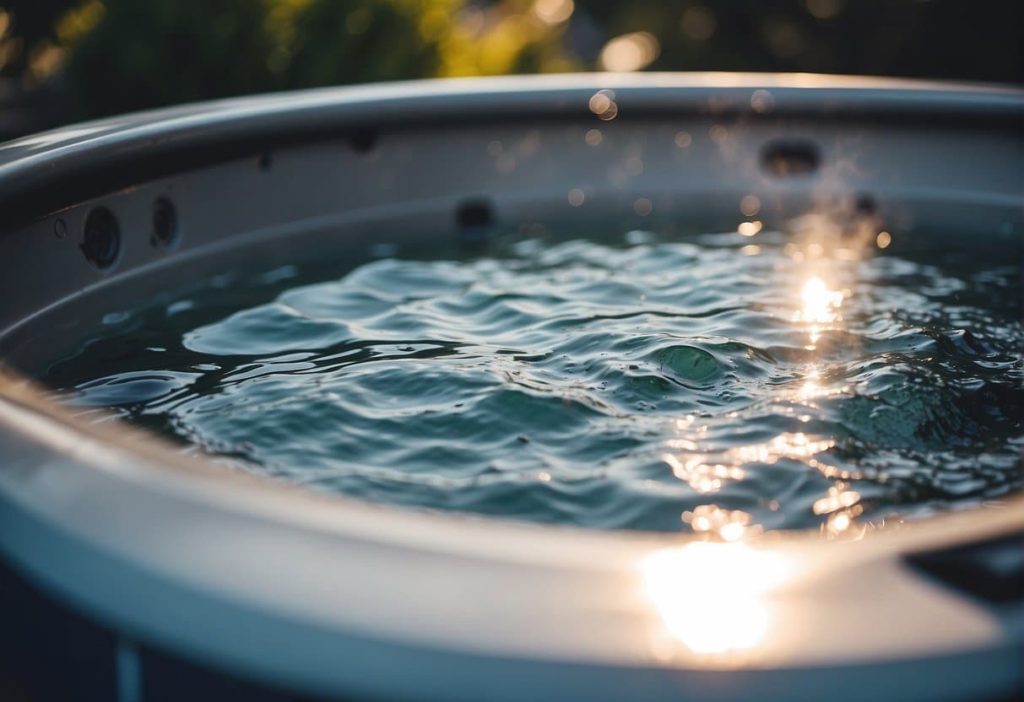
Innovations in Heating and Cooling Systems
The development of advanced heating and cooling systems has greatly improved both the energy efficiency and temperature regulation of hot tubs. Eco-friendly heating systems focus on conserving energy while maintaining the desired water temperature.
Modern cooling systems are designed to manage the water temperature during hot summer days, preventing overheating. Ventilation systems, which provide external air to the cooling systems, help dissipate the excess heat from the water. This not only keeps the hot tub cool but also maintains the efficiency of the cooling system.
In terms of circulation, innovative circulation pumps have been introduced to maintain water circulation by providing a continuous flow of water through the heating and cooling components. This ensures that the temperature remains within the desired range without causing any energy wastage.
Strategies for Effective Temperature Regulation
Several strategies can be employed to regulate the temperature of a hot tub effectively. Some of these strategies are as follows:
- Economy mode: This setting allows the hot tub to operate at an energy-saving mode, maintaining a balance between optimal temperature and energy consumption.
- Summer mode: During the summer months, the hot tub may need to be set at a lower temperature, typically between 85°F-95°F. The summer mode setting makes it easier to maintain this temperature range while preventing overheating.
- Scheduled heating: Programming the hot tub to heat during low-demand hours, such as late at night or early morning, can save energy and ensure the water is at the desired temperature when it’s time for use.
- Insulation: Proper insulation of the hot tub helps retain heat, reducing the energy required to maintain the desired temperature. A well-insulated cover is essential in minimizing heat loss.
By implementing the appropriate temperature control technologies and strategies, you can keep your hot tub at the perfect temperature throughout the summer months while maximizing energy efficiency.
Enhancing the Hot Tub Experience
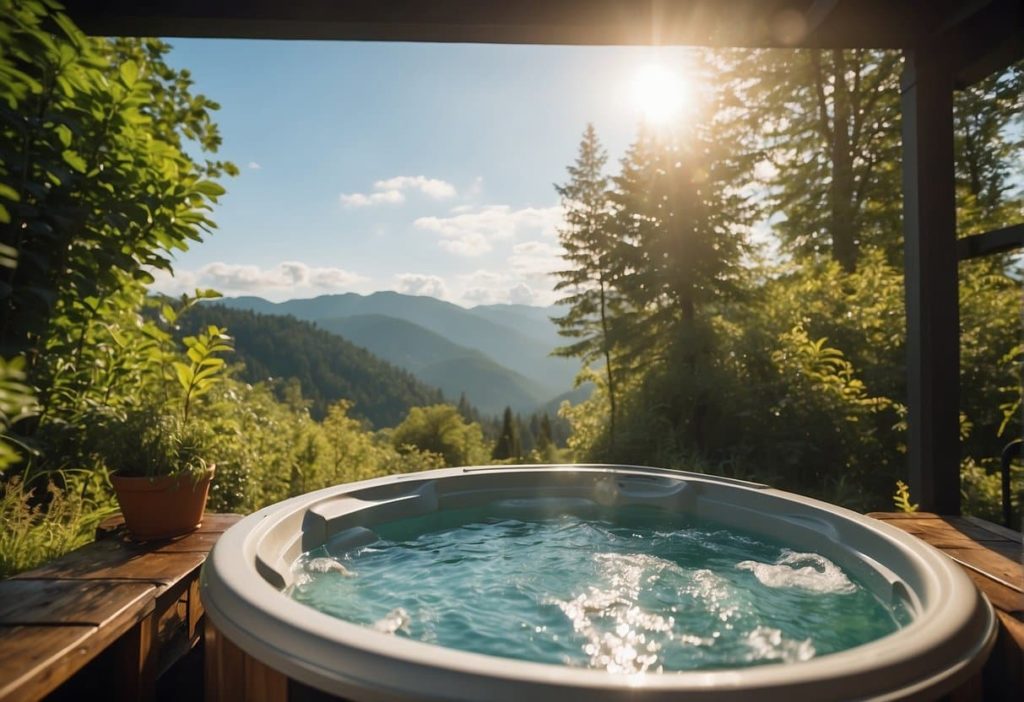
Personal Preference and Temperature Settings
Everyone’s ideal hot tub temperature is different, as personal preferences play a crucial role in determining the perfect setting. Generally, most people find temperatures between 100°F to 104°F (38°C to 40°C) comfortable, but individual preferences may vary. It’s important to adjust the water temperature to suit both your body temperature and comfort level.
To create the optimal hot tub experience in the summer, it’s essential to consider the need for a cool-down period. To do this, you may lower the water temperature slightly below your usual preference, making it more refreshing for your summer soak. Please consult the table below for a quick guide on temperature preferences:
| Preference | Temperature Range |
| Warmer | 102°F – 104°F |
| Neutral | 100°F – 102°F |
| Cooler | 96°F – 100°F |
Additional Features for Comfort and Relaxation
In addition to adjusting temperature settings, incorporating a handful of other features into your hot tub experience can further enhance relaxation and create a more refreshing environment. Consider the following options when customizing your hot tub for the summer months:
- Water features: Think about adding water features like fountains or waterfalls to circulate water and create a relaxing ambiance. These additions can contribute to a cooler, more soothing spa experience.
- Aromatherapy: Introduce calming scents to your hot tub using aromatherapy products specifically designed for spa use. Scents such as eucalyptus, lavender, and peppermint can evoke a sense of calm and rejuvenate the senses.
- Cushions and loungers: Provide extra comfort and support with cushions or loungers, especially during extended soak times. This ensures the most relaxing and enjoyable hot tub experience possible.
- Shade: Shield yourself from the sun by installing a canopy, pergola, or umbrella system to provide shade while you’re in the hot tub. This inclusion will make the water feel cooler and protect your skin from direct sunlight.
Remember, a combination of customized temperature settings and additional features can contribute to an improved hot tub experience in the summer months, helping to create a refreshing and relaxing environment for all to enjoy.
Economic and Environmental Considerations

Reducing Energy Costs with Smart Temperature Management
Maintaining the appropriate minimum temperature for hot tubs in the summer can directly impact energy costs. By carefully managing the hot tub’s temperature, it is possible to reduce energy consumption and lower the energy bill in a household. To ensure cost-efficiency while maintaining comfort, consider using smart temperature management systems. These systems automatically adjust the hot tub’s heating mechanisms according to the user’s preferences, ensuring optimal energy use.
Monitoring and reducing hot tub temperature when not in use: Another way to minimize energy costs is by lowering the hot tub’s temperature by a few degrees when it is not in use. This small change can have a significant effect on the energy bill, without drastically affecting the comfort level of the hot tub. Regularly checking the thermostat to ensure the temperature remains at a minimum level can contribute to lowered energy use.
Eco-friendly Practices in Hot Tub Usage
Implementing eco-friendly practices in hot tub usage can go a long way in supporting the environment while keeping budgetary concerns into consideration. Below are some key practices that support the environment and minimize energy consumption:
- Choose energy-efficient hot tubs: When purchasing a hot tub, opt for an energy-efficient model with features such as insulated covers, low-energy circulation pumps, and LED lighting. These features contribute to lowering energy costs in the long run.
- Use solar power to heat the hot tub: The utilization of solar power for heating the hot tub not only contributes to energy savings but also lessens the dependence on non-renewable energy sources.
- Opt for natural cleaning methods: Chemicals used to clean hot tubs may adversely impact the environment. Natural alternatives such as vinegar and baking soda can serve as eco-friendly cleaning solutions while not compromising the cleanliness of the hot tub.
- Proper maintenance: Regular maintenance of the hot tub, including timely filter replacement and regular checks of the water quality, can guarantee efficient energy usage and prevent potential wastage due to poor functioning.
In conclusion, by adopting smart temperature management strategies and eco-friendly practices, it is possible to minimize energy costs, maintain a comfortable experience, and contribute positively toward the environment.
Frequently Asked Questions
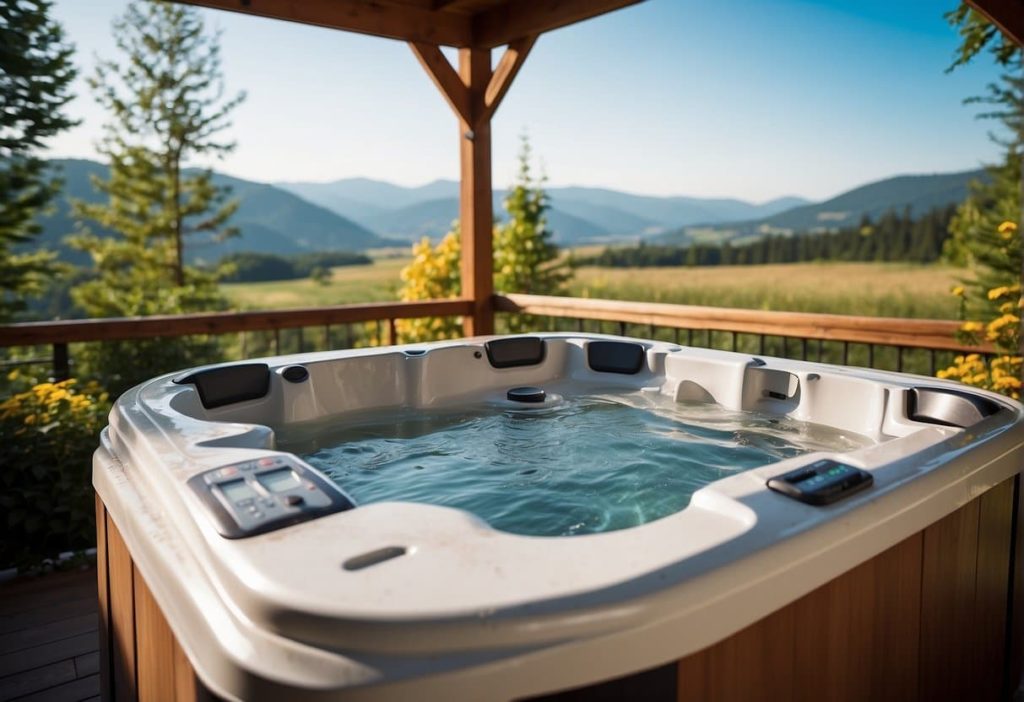
What is the ideal temperature setting for a hot tub during the summer months?
The ideal temperature setting for a hot tub during summer months is typically between 102°F and 104°F (38.9°C to 40°C). Some users may prefer slightly cooler temperatures ranging from 98°F to 100°F (36.7°C to 37.8°C). Personal preference and comfort levels, along with the surrounding weather, should be taken into consideration when setting the temperature.
How should hot tub temperature be adjusted for comfortable use in the summer?
To adjust the hot tub temperature for comfortable use in summer, start by lowering the temperature setting slightly below the usual range of 102°F to 104°F (38.9°C to 40°C), considering the outside temperature. Gradually decrease the temperature in small increments until personal comfort is achieved. It’s crucial to maintain a safe and comfortable temperature that suits the preferences of all users.
What is the safe lower limit for hot tub temperatures when in operation?
The safe lower limit for hot tub temperatures during operation is typically around 90°F (32°C). Lower temperatures may not provide a comfortable or relaxing experience, and in colder climates, the risk of freezing pipes increases. Keep in mind that maintaining a lower limit is important for the protection of the hot tub and its users, especially for seniors and children.
Can hot tubs be set to a cooler temperature to function as pools in the summertime?
Yes, hot tubs can be set to cooler temperatures to function as pools in the summertime. Aim for a temperature range between 85°F and 90°F (29°C to 32°C) for a refreshing dip during hotter days. In this range, the hot tub functions as a small pool, providing a relaxing and cooling environment for users without typical hot tub heat.
What considerations should be taken for hot tub temperatures concerning seniors or children?
When considering hot tub temperatures in relation to seniors and children, the recommended temperature is slightly lower than the standard range, sitting around 100°F (37.8°C). Seniors may be more sensitive to high temperatures and may also have health concerns regarding blood pressure and circulation. As for children, they have less developed thermoregulation, causing them to overheat more quickly. It’s essential to ensure that seniors and children do not overextend their time in the hot tub and always have adult supervision.
How do hot tub temperatures differ between summer and winter usage?
The primary difference in hot tub temperatures between summer and winter usage is the surrounding outdoor temperature. In the summer, lower hot tub settings are more comfortable, while in the winter, users may prefer the higher end of the standard range to counteract the cold outdoor temperatures. Personal preferences and comfort levels, along with the outside climate, play major roles in determining the best temperature setting for hot tubs in either season.

